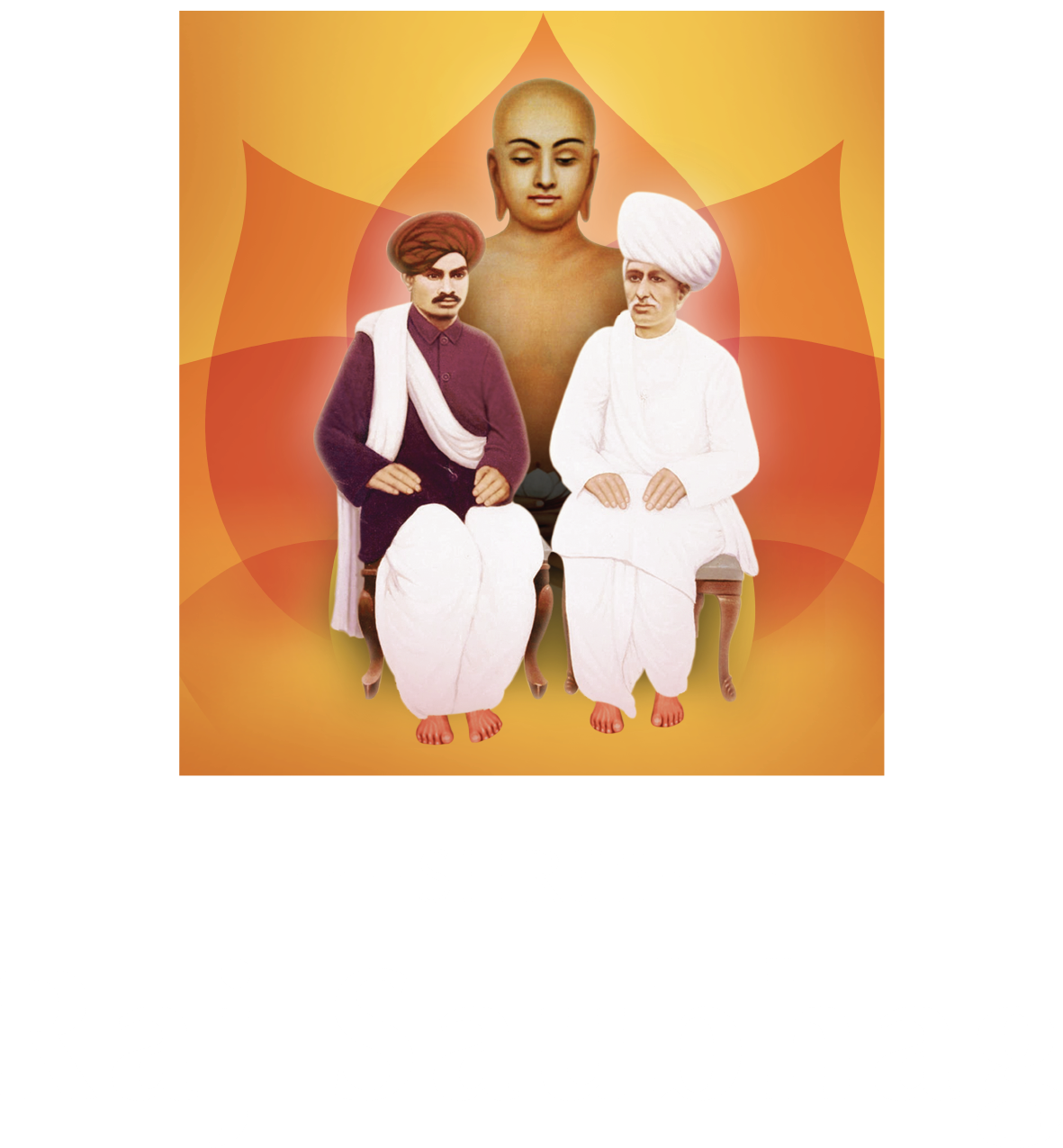Dravya Sangraha
Author: Shree Nemichandra Siddhantidev
Dates: 12 - 16th March 2016
Dravya Sangraha
Written by Shree Nemichandra Siddhantidev, this 58 verse text of the Digamber Jain tradition explores the deep fundamentals of reality (tattvagnan) and is extremely useful to those sadhak seekers contemplating bhedgnan, the discriminative distinction between self and non-self.
The bodh, or teachings of Dravya Sangraha (also known as ‘Dravya nu Yog’) were bestowed by Param Krupaludev Shrimad Rajchandra to Shree Saubhagbhai in Idar, and were instrumental in his achievement of self realisation. Similarly Krupaludev gave a sermon on Dravya nu Yog to Shee Laghuraj Swami and 7 monks also in the Idar mountains.
Click on the image to expand to read Vachanamrut Letter 866
Shrimad Rajchandra highlights the importance of the text in his Vachanamrut Letter 866 outlining the fruits of its contemplation as well who is worthy of it. In Vachanamrut Letter 761 he succinctly summarises the key concepts of Dravya nu Yog in a single letter. Krupaludev finishes by highlighting the key message of the importance of meditation in not only in the realisation of the self, but also in the strive towards freedom from Karma and liberation or Moksha (taken from Dravya Sangraha verse )
Dravya Sangraha text has 3 principle chapters
1. Jiv and Ajiv tattva, Soul and non-soul entities
- Within Ajiv Tattva – all 6 Dravya are explored
2. 9 Tattva
- As Jiv and Ajiv are already explored, the remaining 7 tattva are taken here
3. The path to liberation, Moksha
- Samyak Darshan, Samyak Gnan, Samyak Charitra
- Dhyan, meditation
- 5 Parameshti
The text explores each subject in both perspectives of Vyavahar nay and Nischay nay and then combines these two in a deep exploration of each of the subjects.
Dravya Sangraha highlights the fundamental errors of worldly souls:
- Ignorance of self and attachments to the non-self,
- Deluded quest for happiness in the non-self causes constant suffering or dukh
- The binding of karma in these deluded activities through feelings of like and dislike, raag and dvesh, to objects, circumstances, people, thoughts, sensations and interactions
- Remaining bound through karma in the cycle of life, death and suffering.
Dravya Sangraha systematically addresses these errors and breaks down these interdependent circumstances so that we can change our perceptions, our thought patterns, our understanding and our behavior or conduct from one of mithyatva (ignorant misunderstanding) to that of Samyak (true).
For the initial seeker as well as the ongoing striving sadhak these errors are worth keeping in focus. They shape our goals of self-realisation and liberation from ignorance, misunderstanding and bondage, and they motivate the forging of a guided spiritual path away from the habitual patterns of the past to one that takes us inwards to truth, happiness, peace and reality.
As one takes steps forward on the spiritual inward path, stilling the mind through instruction in meditation, the qualities and defining characteristics of what is soul and non-soul are fundamental in distinguishing the self from non-self, i.e bhedgnan.
Beyond the initial experience of the self, the soul, in the trajectory of liberation the contemplations of influx and binding of karma and the science of stopping this influx and shedding karma already bound, become the key practices. One aims to be completely free of all karma and manifest the soul in its completeness.
The continual differentiation of self and non-self on a moment to moment basis requires study, practice, awareness, striving (purusharth) and faith. This text provides the fundamental basis for thought and study to empower the ability to still one’s self in the qualities of the self, the observer and knower, and remain distinct from all else, body, mind and other attachments included. It is therefore very deep, expansive, encompassing and transformative. It is worthy of repeated reading, comprehensive exploration and practical implementation.
Ekant Maun Shibir
Ekant Maun Shibir is a spiritual retreat held for 5 days for intensive spiritual striving in a conducive external environment. Participants stay in silence and in isolation during the entire shibir.
The daily programme included Param Pujya Bhaishree's param satsang on the topic of Dravya Sangraha from Adhyatmasaar by Upadhyay Yashovijayji Maharaj over the 5 days. There was 5 hours of meditation daily along with self-study, contemplation and devotional bhakti.
Aradhana Shibir
Simulataneous to the Ekant Maun Shibir was an Aradhana Shibir. This was open to all. Param Pujya Bhaishree's satsang was broadcast from the Ekant Maun Shibir. In the afternoon there was a Swadhyay series conducted by the Brahmanishts. Those with Dhyan pratpti conducted 4 hours of meditation daily along with self-study, contemplation and devotional bhakti.


